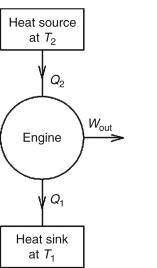The thermal mass of a substance is its ability to absorb, store, and release heat. Different thermal mass materials absorb variable quantities of heat and absorb and re-radiate it for longer (or shorter) periods of time. A brick wall, for example, has more thermal mass than a timber-framed cavity wall, therefore it will absorb more heat than a timber-framed wall of the same thickness.
Similarly, Thermal lag is the pace at which a material releases stored heat. The higher the thermal mass of most popular construction materials, the longer the thermal lag. Water and concrete, for example, have a large ability to store heat and are referred to as ‘high thermal mass materials.
In terms of building materials, Thermal Mass is the ability of a building component to store heat while undergoing a temperature change. An element’s thermal mass is determined by its volume as well as its volumetric heat capacity.

Table of Contents
Daily Life Examples of Thermal Mass
- A ceramic mug will keep your coffee or tea warmer for longer than a plastic or paper cup, because it has a higher thermal mass
- A concrete or brick wall will stay cool during the day and release heat at night, making it a good insulator for your home
- A tile floor will feel cold to the touch on a winter morning, but it will gradually warm up and retain heat, making it a good choice for radiant heating systems
- A cast iron skillet will distribute heat evenly and stay hot for longer than a thin metal pan, because it has a higher thermal mass
- A stone countertop will feel cool to the touch, but it will absorb and store heat from hot pots and pans, making it a good surface for cooking and baking.
High Thermal Mass Materials
Materials with a high thermal mass would absorb external heat, store it, and then transfer it to lower-temperature locations. Thermal mass materials include tiles, bricks, stone, rammed earth, thick concrete blocks, water, gypsum plaster, steel, lumber, and other similar materials. Water is one of the most effective thermal mass materials. This is due to the fact that it has the largest specific heat capacity of any material. (Please check the topic “specific heat of water”).
The Thermal Mass of Water
Water has a volumetric heat capacity that is more than double that of concrete and three times that of bricks, and it rapidly absorbs and releases heat to the surrounding environment. As a result, we can absorb twice as much heat as concrete in the same volume, or half the amount in half the volume.
It is obvious that water is an ideal thermal mass for buildings. The challenge for designers and engineers has always been determining how to harness something that is widely seen as a liability for buildings. Water may swiftly harm a structure and its contents if a roof pond, water wall, or thermal storage tank breaches.
Please check the full article on “Thermal conductivity of water“.
Factors Affecting Thermal Mass
A material must have a combination of three fundamental properties in order to deliver a useful amount of thermal mass:
- Specific heat: A high specific heat capacity maximizes the amount of heat squeezed into each kilogram.
- Density: A dense substance; the heavier the material, the more heat it can retain per volume.
- Thermal Conductivity: Moderate thermal conductivity – the pace at which heat flows in and out of the material is generally in sync with the building’s daily heating and cooling cycle.
Summary
- Thermal mass refers to the ability of a material or object to absorb, store, and release heat energy
- It determines how quickly a material or object heats up and cools down
- Materials with high thermal mass, such as concrete, brick, and stone, are often used in construction to improve energy efficiency and comfort
- Buildings with high thermal mass can reduce the need for heating and cooling, and provide more stable indoor temperatures
- Thermal mass is also important in passive solar design, where materials that absorb and store heat from the sun during the day and release it at night are used to maintain a comfortable indoor temperature
- Examples of materials with high thermal mass include ceramic, concrete, brick, stone, and cast iron
- In daily life, thermal mass affects things like the temperature of our coffee mugs, the warmth of our homes, and the cooking properties of different types of pots and pans.
Related Links
Heat Flux-An Overview
Thermite Welding- An Overview
Power Units- The Basics
Thermal Energy Equation- Simple Overview
Momentum Equation| Definition and Examples
Thermal Conductivity of Water
Frequently Asked Questions
1. What is the thermal mass definition?
Thermal mass is a material’s ability to absorb, store, and release heat. Heat is absorbed and stored by materials such as concrete, bricks, and tiles. As a result, they are considered to have a large thermal mass. Materials with little thermal mass include wood and fabric, which do not absorb or store heat.
2. How does thermal mass work in cold climates?
Thermal mass acts as a heater in the winter, absorbing radiant heat from the sun via the north, east, and west-facing windows and also storing heat from mechanical heating. The thermal mass slowly releases heat, reducing the requirement for heating.
3. What is thermal mass and how does it affect the energy efficiency of buildings?
Thermal mass means how well a material can absorb, store, and release heat. Using materials like concrete, brick, stone, or ceramic in buildings can help keep indoor temperatures stable and save energy. These materials can absorb heat during the day and release it slowly at night, which can keep a building warm without using too much energy.
4. What is Specific heat?
The quantity of heat (BTUs) necessary to increase the temperature of one unit (i.e., one pound) of mass and one degree of temperature (°F) is defined as specific heat.
5. What is Density?
The density of a substance is simply its mass per unit volume — in other words, its weight in pounds per cubic foot.
6. What is Heat Capacity?
The product of density and specific heat is heat capacity. Because specific heat does not take volume into account, heat capacity is a better indicator of a substance’s thermal storage capacities than specific heat. The quantity of heat that may be held in a substance per unit of volume is referred to as its heat capacity (i.e., per cubic foot).
7. What are some advantages of using materials with high thermal mass in construction?
- Regulate indoor temperatures and reduce the need for heating and cooling
- Improve indoor air quality by reducing temperature swings and minimizing the need for mechanical ventilation
- Reduce noise levels by absorbing sound and reducing echoes
- Increase the lifespan of a building by reducing the effects of thermal expansion and contraction on the structure.
More Interesting Links
- BCl3 Lewis Structure in four simple steps - November 1, 2023
- PH3 Lewis Structure in four simple steps - October 8, 2023
- PF3 Lewis structure in four simple steps - September 24, 2023



